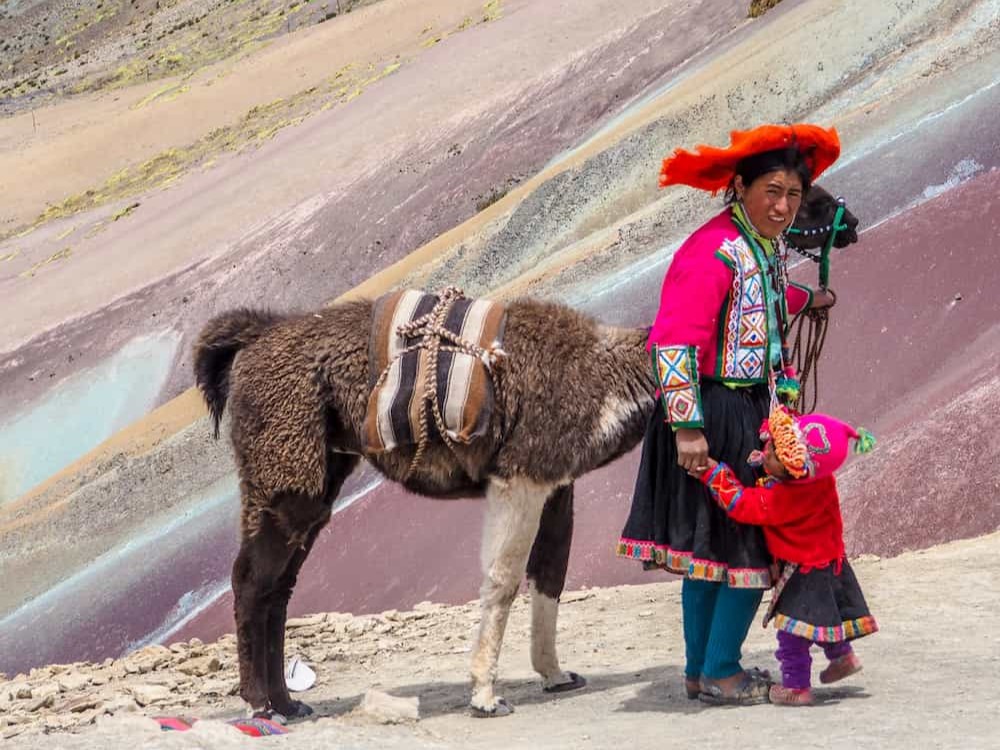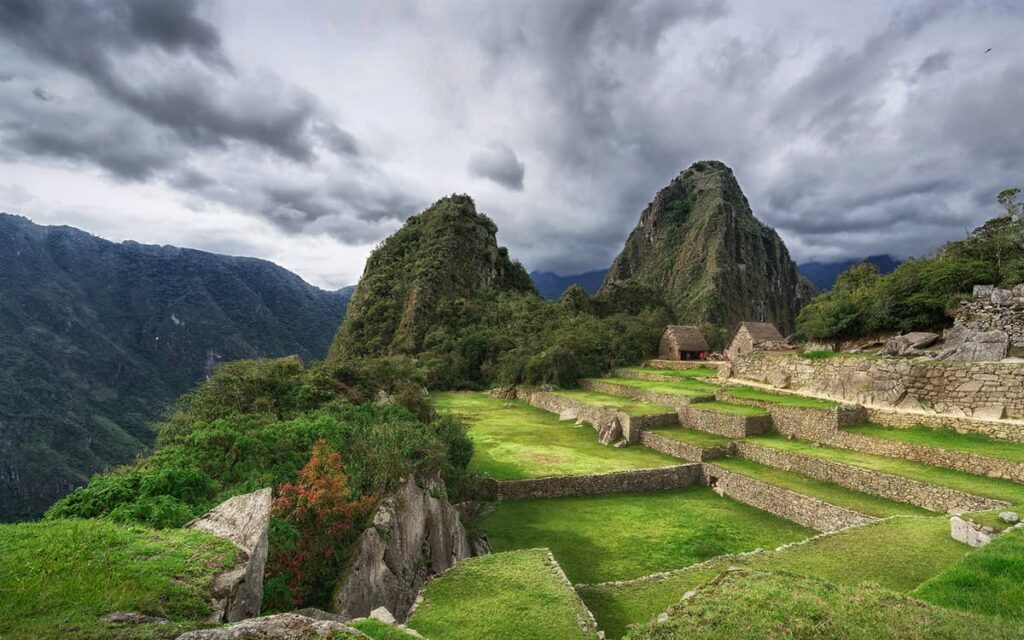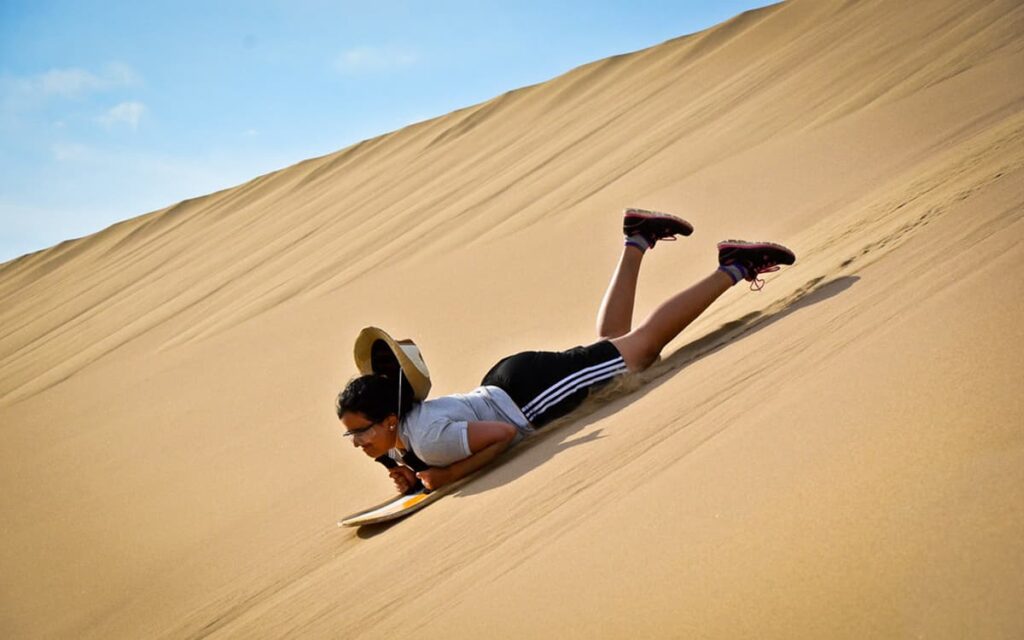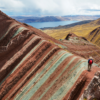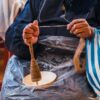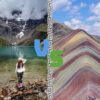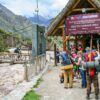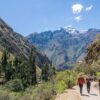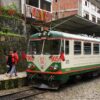Very close to the city of Cuzco (7 kilometers) and less than 1 kilometer from the ruins of Tambomachay, the military construction of Puca Pucara is located at an altitude of 3,680 meters.
The remains that we have today of this fortification are several walls, stairways, channels, aqueducts and terraces. This fortress served as a defensive place for the city of Cusco.
It was also part of the network of Inca roads called Qhapaq Ña that reached 30,000 kilometers, and served to unite the different fortresses and cities of the Inca Empire.
The name of Puca Pucara in Quechua translates as “Red Fortress” (puca = red and pucara = fortress), motivated by the reddish color that the stones that form it take on at sunset.
Puca Pucara Archaeological Complex
Puca Pucara is one of the constructions of the cultural and historical legacy of the Incas, located in the department of Cusco just ten and a half kilometers from the city of Cusco in Peru, in addition to being 6 kilometers from the impressive Sacsayhuaman fortress. It is located in a mountain relief with a height above sea level of 3850 meters.
The builders of the Incas used materials from nature to make their majestic buildings, in the Puca Pucara in addition to the stones and rocks they used the surrounding land and stipa ichu which is a very particular straw from the Andean highlands, the union of the land with straw is the one that gives the reddish color to the semi-walls of Puca Pucara when they are touched by the rays of the sunset sun, hence its name since in the Quechua language it is defined as «red fort», which What would make an Alhambra in Peru, the Alhambra of Spain in Arabic language is a red castle due to the same effect of the sun on its walls.
Architectural Distribution
The architecture of the Incas is of great value and rich in constructive details, there are plenty of constructions to establish this statement, and not only in architecture they were ingenious, but also in other arts, such as the way they took time to through your calendars regarding the sun and the moon; as well as their accounting system through the quipu or knots, an instrument by which the Incas stored population information, inventory of food and textiles, etc.
The concept of space at the level of architecture used by the Incas was an impressive advance for its time, combining the location of materials from nature itself, and involving the individual in their management and development, all this linked to the natural topography
of the land, existing services among others. They played with nature, managing to modify the environment, even the mountains that they considered as living beings.
The construction materials used in Puca Pucara are conglomerate stones, large and small limestone rocks, local soil and straw from the endemic stipa ichu species.
The constructive quality of the walls of Puca Pucara is not as relevant if we compare it with other majestic buildings of the Incas such as the Coricancha in the city of Cusco, or the same temple of the Moon in Huayna Picchu, or the fortress from Sacsayhuaman that is so close to Puca Pucara, among many others.
Puca Pucara has characteristics of Inca architecture for military purposes, due to its terraces placed one on top of the other, remains of watchtowers or watchtowers, central squares, as well as walls, comineries, aqueduct service and stairs. Towards the west and facing the paved road that exists today, you can see a small rectangular enclosure, with its four walls still raised and its door in a trapezoidal shape very typical of Inca constructions as well as rectangular spaces. This small enclosure for its position constitutes a domain within the archaeological remains that are around it.
The Puca Pucara is distributed in constructions of three levels or levels of different heights, let’s see each of them below:
Level 1 or Lower Level
The lower or lower semi-walls of the Puca Pucara have an uneven shape that meanders through the mountain joining its natural shape without actually cutting the protruding rocks, with rooms or very irregular enclosures of different sizes which are six of this type, adding to them three spaces, one more elevated in a trapezoidal shape that resembles a plaza oriented towards the west of this level, provided with steps for access and this plaza in turn presents on two of its sides remains of what could have been two buildings. The nine areas or spaces that make up this level of irregular and open distribution give signals that perhaps the Puca Pucara was not really a fortress.
Level 2 or Medium Level
The semi-walls of the second level are slightly higher than those of the first and surround the central part of the entire archaeological site. This level is also provided with rooms, only in less quantity than the first level, in total there are three enclosures, the conformation of two of its floors drawing powerfully, since they do not have the rectangular constructive shape typical of Inca constructions but rather have a trapezoidal shape that was the shape they used for walls, doors and windows. Between both levels you can see wide comineries facing south and east of the archaeological complex.
Level 3 or Higher Level
The third and last level of this construction, only signs remain that it once existed, since due to the effects of erosion and the passage of time it has been destroyed.
What was the real function?
The true objective of the Incas when building Puca Pucara is not as clear as it seems, not how if one can be certain in another of their constructions for fortresses, temples, etc.
Archaeologists have determined some of its possible functions according to various construction characteristics, topography, geographical location with respect to other Inca constructions, etc. Let’s see them below:
As a Military Fort
Due to its location on a mountain, as well as the meaning of its name in Quechua «Red Fort», or because of its fortified appearance, archaeologists give Puca Pucara the function of Military Fort, however some of its architectural distributions exclude o they deny this possibility.
As a rearguard or shelter site
Puca Pucara does not present evidence or historical signs of having experienced confrontations or territorial battles, as if Sacsayhuaman may have them, which was the fortress used by the Incas to defend themselves from the Spanish in search of their conquest. Furthermore, archaeologists analyze the situation of the proximity of Puca Pucara with Sacsayhuaman and associate it with the fact that Puca Pucara could have been a building destined for the settlement of armies or warriors, or for the stay of the guard and royal servitude while the Inca emperor was away. visit the fortress of Sacsayhuaman or rest in the other Inca construction called Tambomachay just 130 meters away between it and Puca Pucara.
As a connection between other buildings
From the city of Cusco, which was the Inca urban center, the Incas built a series of paved roads that they called qhapac ñan, these roads interconnected their main urban centers, one of them passes and crosses Puca Pucara, of which there are only remains that are they can visualize very easily. It is important to note that the Qhapac ñan built by the Incas, came to unite Peru of that time with its neighboring countries. The archaeologists in their studies and inspections inside Puca Pucara also found an underground cave or tunnel that they think may be a secret underground connection with the site of worship to water and the resting place of Emperor Tambomachay, a case that has not yet been verified. (see article: Tambomachay)
As a Passageway or Supply Site
Another function that scholars and professionals give Puca Pucara is that of being a transit or supply site due to its strategic location with respect to other buildings. The buildings that fulfilled this function in the Incas called them tambo, which they used to store food, textiles, firewood among other elements, and where the messengers or Chasquis could rest in the course of their work.
Visiting Puca Pucara
Leaving behind the uncertainty which was the true motive of the Incas when building Puca Pucara, we will now focus on how to get there and visit such an intriguing Inca building. Puca Pucara can be visited independently, only by means of a private vehicle since public transport it doesn’t get there. In this option, you must first get to the city of Cusco and from there you have three roads or routes to Puca Pucara, the most direct and with less traffic through winding roads to the mountain is taking highway 28 G, the other two at least They generally have a lot of traffic, which are through the Don Bosco sector and childhood avenue, both routes take up highway 28 G.
To enter the lower part and in front of Puca Pucara you can buy tickets for the tour inside the archaeological monument, the hours of public service are from 7 in the morning until 6 in the afternoon.
There is another option offered by the municipality of Cusco, which is acquiring tourist tickets that offer excursion tours to various Inca buildings.The tourist ticket related to the Puca pucara includes a visit to the impressive fort of Sacsayhuaman, the temple of worship to water and rest of the Inca emperors Tambomachay, Pisac monument of the sacred valley of the Incas, Qenqo the Inca labyrinth, Piquillacta which are the remains of an Inca city, Tipón Inca archeology park, in addition to Chinchero and Ollantaytambo which are towns, one of the province of Urubamba and the second an Inca town. It is a very interesting option due to the tourist attraction that the Tours contains, even more so if we know that the visit to the Puca Pucara is very short in just twenty minutes we can do the entire tour.
If you visit the city of Cusco another impressive destinations that you can visit are the tour to rainbow mountain peru or the humantay lake tour from cusco, which only takes one day. But if you are gonna to stay more days in Cusco, other archaeological places you can know will be the choquequirao trek peru, the salkantay trek to machu picchu, and the classic inca trail 4 days 3 nights.
How to enter Puca Pucara?
To enter, you simply have to present the tourist ticket of the city, remember that it is impossible to make an independent payment for the entrance to the place.
How to get to Puca pucara?
There are multiple ways to get to Puca pucara, the important thing is that you do not miss the opportunity to take an increasingly complete tour.
With a travel agency:
All companies that work in the sector include this attraction in their program, City tour or visit to the city, the prices are very accessible, we only recommend that you do not get carried away by excessively low rates. In our case, the itinerary runs as follows:
This activity can be carried out at two different times that allow the adaptation of any itinerary, the first one that starts after the pick-ups at 9:00 in the morning and the second at 1:00 pm.
The conventional visit generally begins in the convent of Santo Domingo or the old Qorikancha and immediately continues in the cathedral, which will be reached by doing an informative walk through 03 blocks.
After these visits, you will finally leave the city in approximately 20 minutes to continue with successive visits to the archaeological centers of Tambomachay Pukapukara, Qenko and finally Saqsaywaman, the most impressive of them all.
The visit ends around 2 or 6 in the afternoon, which, depending on the shift, makes it imperative that passengers leave after lunch, or if they wish they have the option of bringing their own snack.
With a private taxi:
Hiring a private taxi to visit Tambomachay is a very good option, and if you have mobility at your disposal you can take the opportunity to do the complete tour and not only visit Puca Pucara but also Tambomachay Qenko el Cristo blanco and Saqsaywaman. The service should not cost you more than 100 nuevos soles.
Buses, combis or colectivos to Tambomachay.
If it is your wish, you can take a collective service to get to Tambomachay, all you have to do is go in one of the many mobilities that pass, first, to the main location of the national university of San Antonio Abad del Cusco, from the historic center this shouldn’t take you more than 15 minutes. Finally, at this stop you will have to wait for some buses from the company called «Huerto». Once on board, it will take approximately 30 minutes to get to the archaeological center. The staff of this transport will be happy to assist you.

